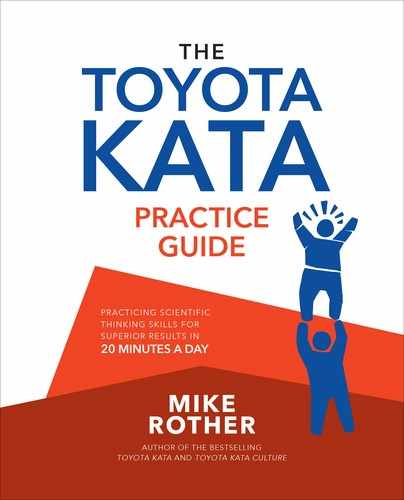Book Description
Take the Kata path to scientific thinking and superior results!
In this long-awaited companion to the groundbreaking book Toyota Kata, Mike Rother takes you to the next level of developing business mindset and capability for the 21st Century. Much more than a list of management concepts, The Toyota Kata Practice Guide walks you through the process of making improvement, adaptation, and even innovation routine behavior.
Designed to help a coach (the manager) and a learner work together for developing new skillsets, The Toyota Kata Practice Guide delivers the information, insight, and frameworks you need to:
* Form habits that help you solve problems and achieve challenging goals
* Modify the thought patterns that drive your behavior
* Develop an organizational mindset that drives superior results
The Improvement Kata gives learners the means to experiment their way through obstacles and achieve tough goals; the Coaching Kata gives managers the means to accelerate and cement their people's learning.
In the new age of business, increasing efficiency and decreasing costs is no longer the end game. A manager’s job today is to develop patterns of thinking and acting in their people that lead to success with any challenge. Consistent, mindful practice is the best way to do it—and The Toyota Kata Practice Guide is the best way to get there.
